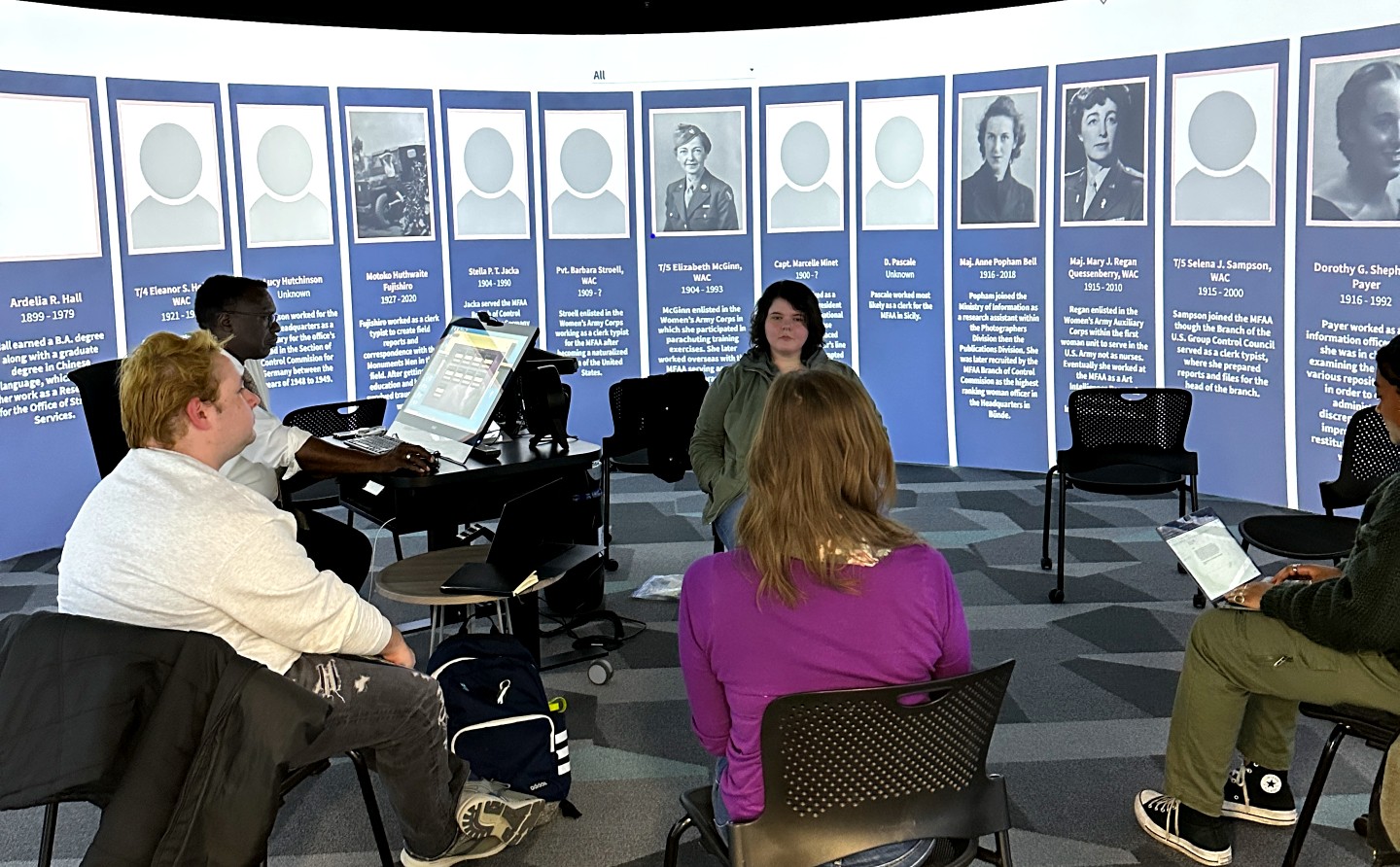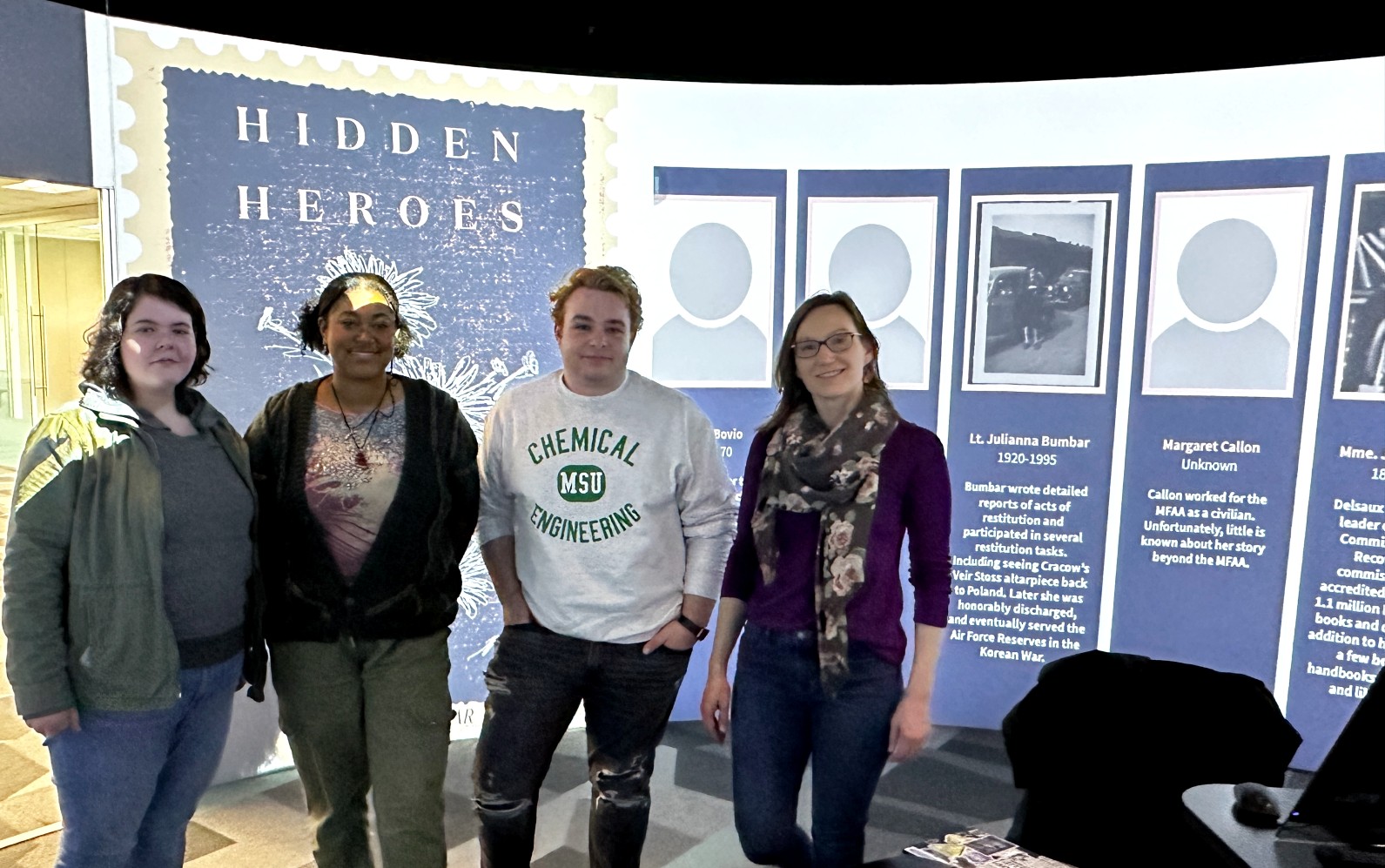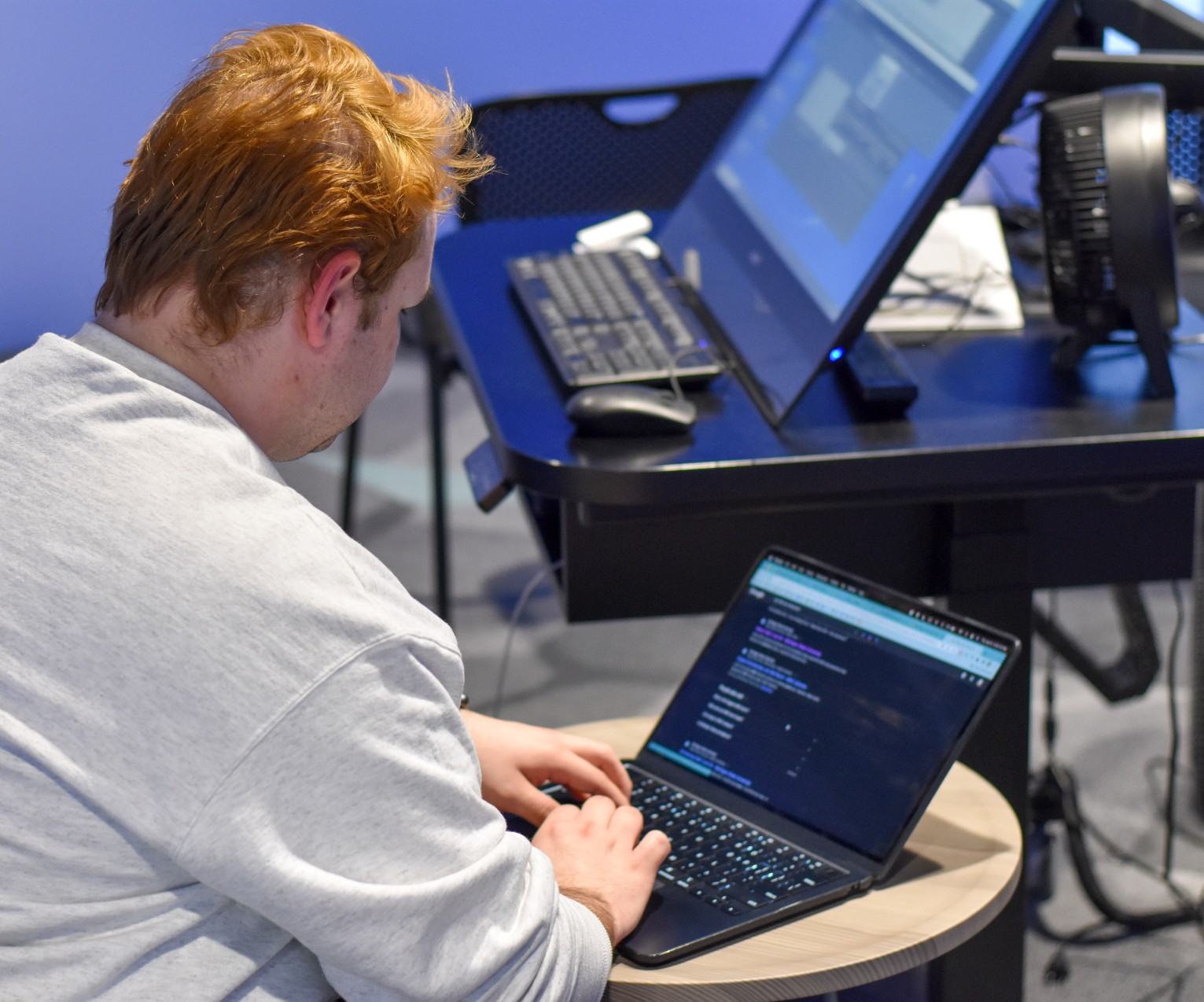A Digital Humanities Seminar class at Michigan State University has partnered with the Monuments Men and Women Foundation (MMWF) to raise awareness of the women who bravely fought to rescue and return art and other cultural treasures stolen by the Nazis during World War II.
This semester-long collaboration resulted in the class, taught by Kristen Mapes, Assistant Director of Digital Humanities in the College of Arts & Letters, creating the Hidden Heroes: Women of the War website and a companion interactive exhibit to honor the 27 Monuments Women who played an instrumental role in the post-war restitution of almost 4 million stolen cultural objects. Mapes also is a member of the MMWF Board of Trustees.
“These women were hidden heroes,” said Oliviah Brown, a senior double majoring in English and Professional Writing with a minor in Digital Humanities. “They weren’t as showcased as the men were. And I really want people to listen to their stories and to know them as people.”
The Hidden Heroes: Women of the War exhibit invites the public to further explore the stories of the Monuments Women through this hands-on interactive exhibit created by the Digital Humanities Seminar class. This exhibit will take place on Thursday, April 20, from 4:30 to 6:30 p.m. and Wednesday, May 10, from 3 to 5 p.m. in the MSU Libraries Digital Scholarship Lab located on the 2nd Floor of the Main Library. Anna Bottinelli, President of the Monuments Men and Women Foundation, will be at the May 10 event.
“Everyone deserves to be celebrated in a way that recognizes their talents and skill, which is what we’re trying to do for this group,” said Taylor Hughes-Barrow, a junior Human Development and Family Studies major with minors in Digital Humanities, Law Justice, and Public Policy. “The exhibit presents their stories as a form of art. It highlights and uplifts the women in a way that is engaging and interesting to an audience, in a way that is very visually unique and cool.”


For the exhibit, the class used a combination of slideshows, data visualizations, and audio storytelling to tell the stories of the Monuments Women and will display this using the cutting-edge technology of the 360 Degree Visualization Room at the MSU Libraries Digital Scholarship Lab.
“We want to make the 360 Room like an art gallery so that people can come and learn about these historical figures in a way that is not just scrolling through a screen,” said Michael Griffin, Experience Architecture major with a minor in Digital Humanities, who worked on prototyping and making different visualizations for the project. “My favorite part of the project is getting to use spaces like the 360 Room, and looking at something two-dimensional on screen, then putting it in a bigger space using this new technology that not a lot of other organizations have a chance to use.”
Another unique technology used by the group is the Museum in a Box, which is connected to the Internet and when you place an object on it, an audio response will play.
“The Museum in a Box is a small, maybe six-inch by four-inch, box,” said Brown, who worked on the audio for the Museum in a Box. “We have a set of cards with stickers on them, and when you touch them to the box, it plays a certain audio, depending on the sticker. It’s a really fun experience. We can also add images and blurbs to the cards, so you have more information on the audio. I want it to be as interactive and entertaining as possible, while also being informative and educational.”

This is not the first time the College of Arts & Letters has partnered with the Monuments Men and Women Foundation. Last year, the Design Center at MSU, which is part of the Department of Art, Art History, and Design, designed the organization’s new logo after it changed its name to include the Monuments Women in the title. Each student of the Design Center created a logo and it was a design by Grace Houdek, who is now an MSU graduate with a B.A. in Graphic Design, that was chosen for the organization’s new logo.
The Hidden Heroes: Women of the War project aims to change the way people think about this piece of history by including the women’s story in the historical narrative moving forward. It is a shining example of the power of technology to tell stories that are informative, emotional, and engaging.
Through their hard work and dedication, the Digital Humanities students have created a visually stunning and emotionally resonant exhibit that celebrates the accomplishments of these hidden heroes.
“This project is exciting because it was led by the students and has been accomplished in only a few weeks,” Mapes said. “They decided to use the technology (360 Room, Museum in a Box, etc.), and they decided to focus on a public-facing audience in order to accomplish the storytelling and awareness-raising aims of the project. It has been a joy to support them in developing and executing this meaningful work in such a short timeframe. We have been able to make all this happen through the collaboration and assistance of the team at the Libraries as well, from their communications team to the Lab’s technology staff.”